In the popular card game blackjack, sometimes referred to as “21,” players try to outscore the dealer by having a hand that comes the closest to totaling 21 points. There is room for advanced strategy, the play is exciting, and the rules are straightforward. In fact, the chances are occasionally in the expert player’s favor if he or she can count cards and plays a perfect game mathematically.
Blackjack is primarily a luck and chance game, but it also includes some useful methods that can help you maximize your wins and wagers. Everything you require to set up your game will be included in our instruction.

Layout of the Blackjack Tables
When sitting at a table made especially for the game of blackjack, many people will notice the form of the table right away. The oval shape is usually chosen because it facilitates the seating of the greatest number of players in a single sitting and keeps the dealer easily accessible to everybody.
Moreover, the shoe from which the cards are dealt is located near the end of the table, which is flat and where the dealer usually stands. Unless it’s an automatic shuffler, the shoe is rectangular and can accommodate up to eight decks. Naturally, the number of decks used varies based on the type of blackjack being played; in this instance, cards are usually dealt by hand.
The felt covering most tables is made of, usually in two colors: green or red. That being said, it wouldn’t be shocking if the former hue was seen more frequently. Not only that, but each player has a specific position on the table where they can lay their stake and reveal their hand.
Furthermore, the rules of the game, including payouts and whether or not insurance bets are permitted, are either printed on the table at many blackjack tables or are highlighted on a card at others. Of course, one of the most crucial guidelines to check is if blackjack pays out at a complete 3 to 2.

Important Things to Know Before Playing Blackjack
- In Blackjack, every player is betting against the dealer. The individual non-dealer players aren’t playing against one another.
- The goal of the game is to get a higher hand than the dealer without going over 21. Going over 21 is called busting.
- If a player has a better hand than the dealer without busting, they win their bet. If they have a worse hand, the dealer takes their bet.
- Each participant attempts to beat the dealer by getting a count as close to 21 as possible, without going over 21.
Blackjack Rules
There are many different rule variations and conditions that can affect how the game of Blackjack is played. In other words, not all blackjack games are created equal, in terms of the odds and favorability to the player. Here is an overview of some of the rules that will affect the odds of the game.
All the players make a bet with their chips
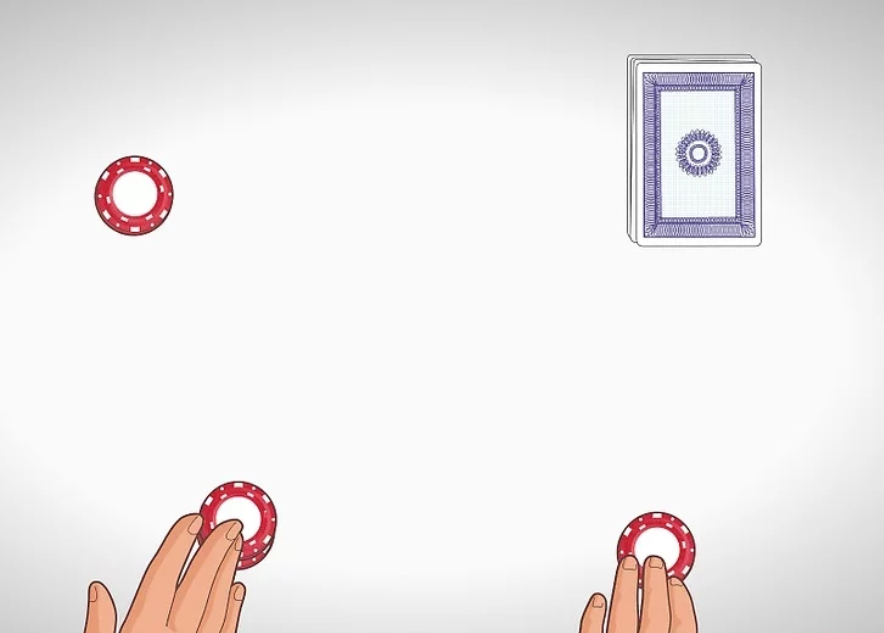
Before they even receive their cards, each participant places a specific amount of money wager using any betting materials they have available. Before the round officially begins, all players must enter their bets.
- If you have poker chips available, distribute them among the participants so that each can place a wager. Feel free to utilize anything you have hanging around your house in large quantities if you aren’t playing for real money (like matches).
The dealer gives a card to each player as well as themselves

Each player receives a face-up card from the dealer, who then places a face-down card in front of them. As long as the players are unable to see the dealer’s opening card, it doesn’t matter if they can see each other’s hands.
- Blackjack is a card game played with a 52-card deck. Before dealing out the cards, the dealer must take out the Jokers and shuffle them.
The dealer hands out a second card to every player
The dealer deals each player another face-up card, just as they did previously. However, this time the dealer holds their second card in front of them, face up, while keeping the first card face down.

The player to the left of the dealer starts gameplay
Every round, the player to the left of the dealer goes first to keep things ordered. The game then proceeds in a clockwise manner.
Also Read: Lucky Spin APK for Android-Free latest Version
Decide if you want to stay or hit

After adding the two numbers on your hand, determine how close it is to 21 and how it stacks up against the dealer’s hand. The best course of action is definitely to “stay,” or keep your hand as is, if your total is quite high (such as 17 or 18, which are very near to 21); if it is low (such as in the single digits), you may want to consider “hitting,” or adding another card to your hand.
- Staying simply means that you don’t want the dealer to give you another card that’ll get added to your total. This is signified by holding your hand flat and waving it.
- Hitting means that you’d like the dealer to add another card to your hand, and is signified by tapping the game table with your pointer and middle finger. You can hit as many times as you’d like until you reach or go over 21.
Cycle through each player until they’ve each finished their turn
Let each player examine their cards for a little while before deciding whether to hit or stay, then inform the dealer. Players that hit too frequently run the risk of busting, or drawing more cards than 21. They forfeit both their original wager and the round automatically.
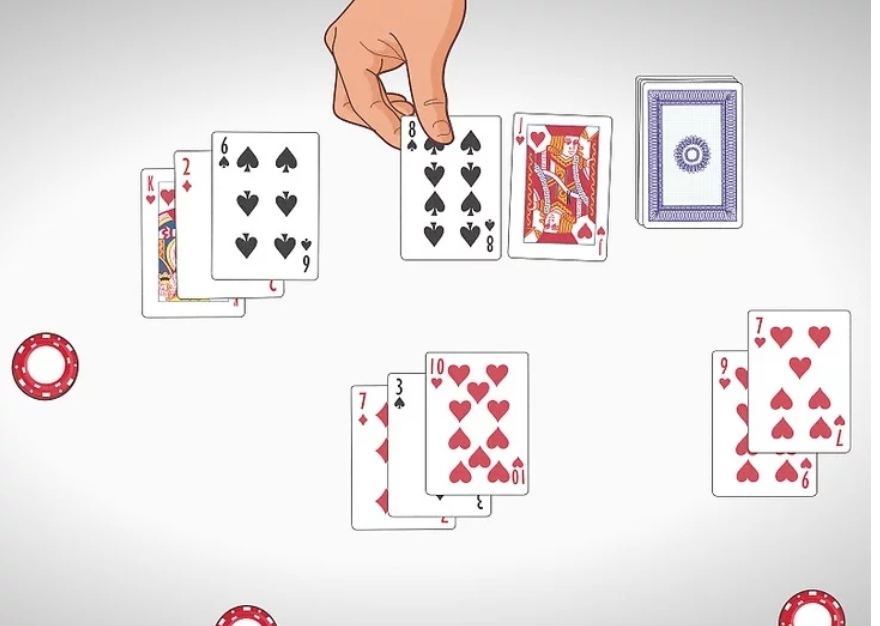
The dealer reveals their second card and winners are determined
The dealer now turns over their initial card to show the value of their hand. They must hit and take another card if the total is 16 or less. The dealer must remain if the card is valued at 17 or more.
- Unless a player has a Blackjack themself, all players immediately lose the round if the dealer has a Blackjack. They push in this instance, meaning that the player who received Blackjack just receives their initial wager back. Additionally, a push happens whenever the dealer’s hand and the player’s match.
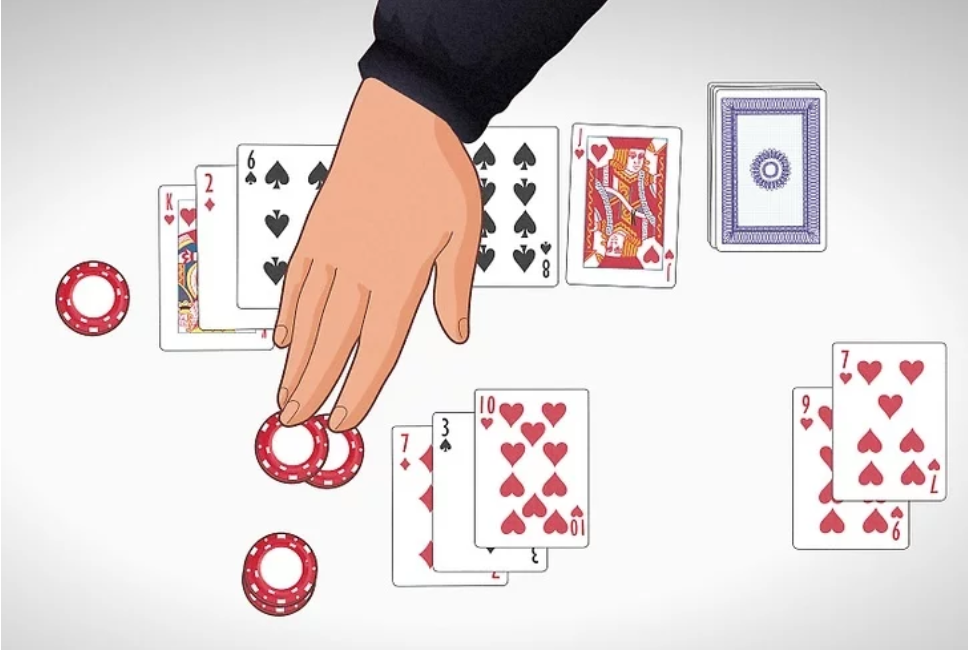
Bets are paid out and a new round begins
Unless they bust, the player who has a hand that is higher than the dealer’s but not greater than 21 wins the round.[12] All winning hands are paid out one to one; if you wager one chip, you will also win one. If you bet two chips for the round, you would receive three chips in return if you had a 21-point (Blackjack) hand. This would leave you with five chips in total.
- After the round ends, the dealer collects the cards, shuffles them, and starts a new round.
Unique Gameplay Methods
Splitting
You can choose to “split” your hand into two if your second card is the same as your first (for example, two eight cards). Ask the dealer to “hit” each of your hands after setting down the equal amount of chips for your split bet. Splitting is simply granting yourself an additional turn for the round because each hand is distinct from the other. You keep on playing with your other hand even if one hand bursts.
- If you split 2 Aces, the player can only hit each hand one time. If you end up getting a point total of 21 on one of your hands, this isn’t considered a Blackjack (in terms of payout), but it still pushes if the dealer gets a Blackjack.
- Any 2 cards with the same point value can split, like a Queen and a Jack (which are both worth 10 points). This rule varies by casino, though, so double-check with your dealer before you try this maneuver.
- Separate your pointer and middle finger into a “V” shape and place them on the table to let the dealer know that you’re splitting.
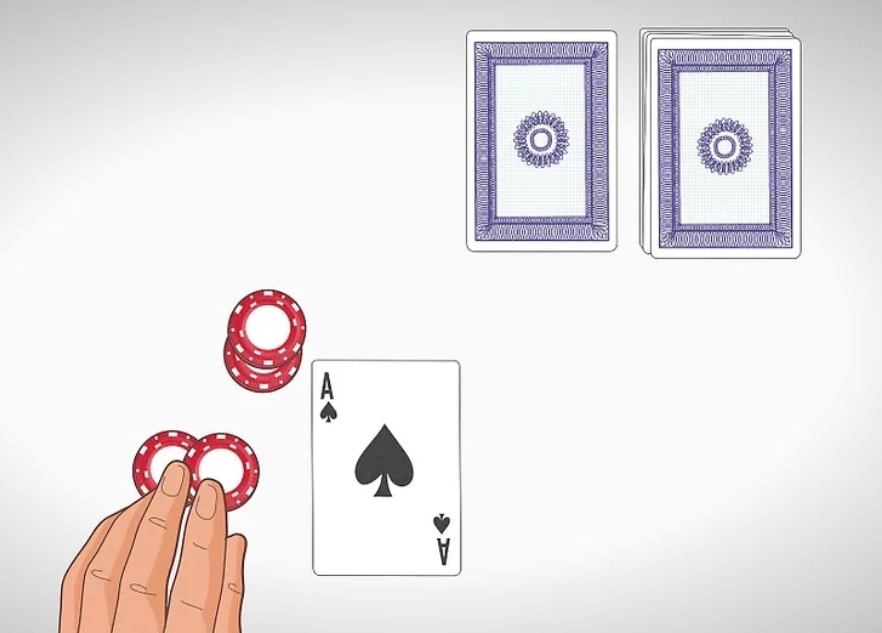
Doubling Down
If you choose to “double down,” that is, to increase your initial wager by two before the dealer deals you another card, you have the opportunity to win a lot more money all at once. Although you can only hit once when you double down, if luck is on your side, it can be a profitable method to win a round.[16] When you hold a lower hand, such as an Ace/11, it is advisable to double down because receiving a 10-value card will raise your hand to a Blackjack.
- Signal to the dealer that you want to double down by touching an extended pointer finger to the game table.
- If you don’t feel like doubling your bet, feel free to bet a lower amount instead.
- You can double down on any hand that’s lower than 21, including split hands. The main thing to remember is that you can’t hit after you’ve doubled-down.

You should “surrender” your hand to the dealer rather than hitting or holding on if you have a very poor hand. Although giving up reduces your initial wager by 50%, it can prevent you from losing all of your money. Sliding your pointer finger in a horizontal line across the game table indicates a surrender to the dealer.
- Not all casinos may let you surrender.

Side-betting (insurance)
Every player gets the chance to make a side wager, also referred to as “insurance,” if the dealer’s initial card shows up as an Ace. By making this wager, you assume that the dealer is holding a 10-point value card face-down, giving them a Blackjack. This “insurance” wager may be the same as your initial wager or less.
- If the dealer has a Blackjack: Your first bet loses (unless your hand is a Blackjack as well), but your side bet gets a 2 to 1 payout. For example, if you bet 1 chip on the side bet, you’d get 2 back (giving you 3 total).
- If the dealer doesn’t have a Blackjack: You lose all the chips you put down for the insurance bet.
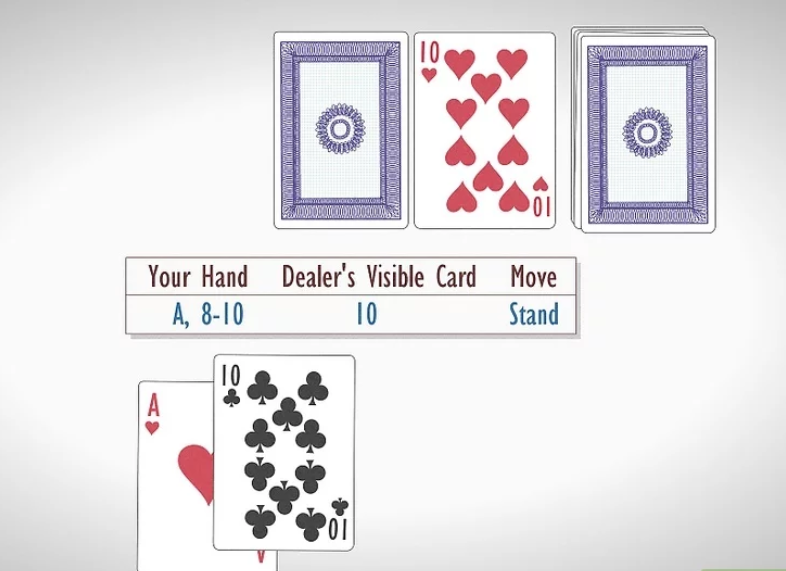
Basic strategy
Blackjack winning strategies necessitate the player playing every hand as optimally as possible, and such strategies constantly consider the dealer’s upcard. The player should continue drawing until a total of 17 or more is attained when the dealer’s upcard is a good one, such as an ace, 7, 8, 9, 10-card, or so forth. The player should stop drawing as soon as he reaches a total of 12 or above when the dealer’s upcard is a weak card, 4, 5, or 6. Here, the tactic is to never accept a card if there’s a possibility of losing. Letting the dealer hit and hopefully going over 21 is the goal with this weak holding. Ultimately, the player should stop with a total of 13 or above if the dealer’s up card is a fair 2, or 3.
The usual tactic when using a soft hand is to keep hitting until at least 18 is reached. In other words, if the player had an ace and a six (7 or 17), they would hit rather than halt at 17.
The following is the fundamental doubling down strategy: The player should always double down when they have an 11 total. Unless the dealer shows an ace or ten-card, he should double down with a total of 10. The player should only double down with a total of 9 if the dealer’s card is fair or bad (2 through 6).
When splitting, the player should always split a pair of aces or 8s; identical ten-cards and a pair of 5s should never be split because two 5s make ten, which is better employed for double down. Eight is a nice number to draw to, thus a pair of fours shouldn’t be split either. Unless the dealer has an ace, 8, 9, ten, or nine card, then 2s, 3s, or 7s can usually be split. Lastly, unless the dealer’s card is terrible, 6s shouldn’t be divided (2 through 6).
Typical Blackjack Techniques
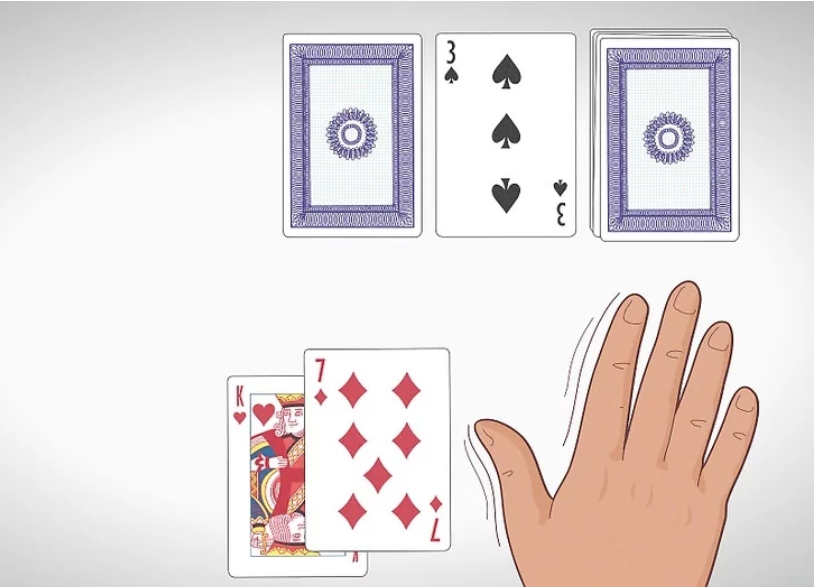
Stay if your hand is 17 or higher
If you ask the dealer to hit, you never know if you’ll get an Ace, 2, 3, or 4, but the odds aren’t in your favor. Since there is a far greater possibility of busting and knocking yourself out at this point, it is always wiser to stay and hope that your hand won’t be lower than the dealer’s.
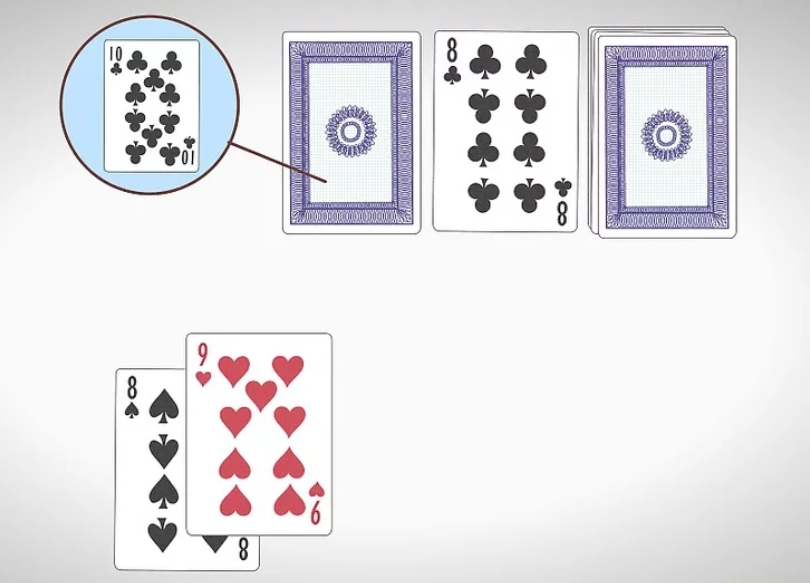
Assume that the dealer’s face-down card is a 10
16 of the 52 cards in a given deck of cards—the 10s, Jacks, Queens, and Kings—have a point value of 10. Although there’s no assurance that the dealer’s concealed card will be a 10, the chances of getting a 10 are higher than those of any other single card value, so as a beginner, it makes sense to adopt this technique.
- More advanced players don’t use this strategy and instead opt for more sophisticated methods, but it’s a good strategy for beginners.

Assume that the dealer will bust if their face-up card is 6 or lower
If the dealer’s hand in blackjack is less than 16, they must hit. Suppose the dealer has a 6 for their first card and a King (worth 10) for their second card, for a total of 16. Since their hand is less than 17, the rules would oblige the dealer to hit again; yet, the odds of them getting an Ace, 2, 3, or 4 are minimal in relation to the other cards. It is therefore safer to presume that the dealer will bust if the initial card is low.
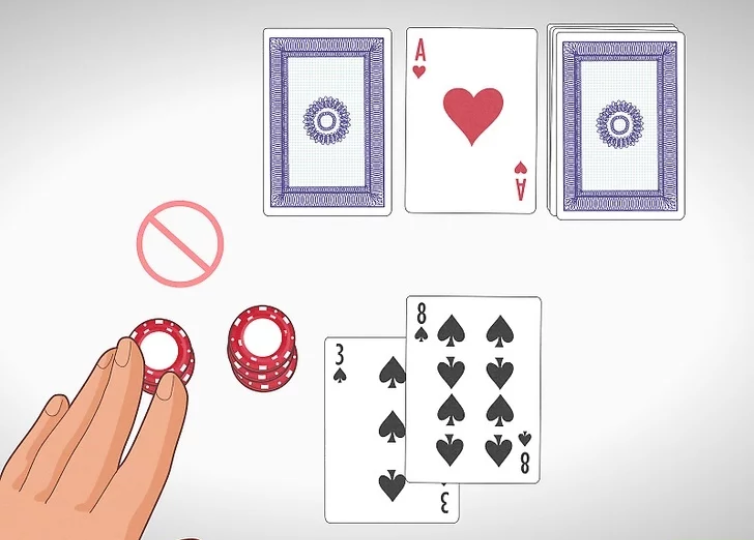
Never Bet on Insurance
Even though insurance might be a profitable strategy to generate some extra cash (especially if your initial wager is unsuccessful), you can almost never be sure that the dealer will initially disclose an Ace in their hand and hold a 10 face-down. Rather, be cautious and turn down the dealer’s offer of insurance bets.
Proper Casino Etiquette

Place your money on the table instead of handing it to the dealer
Most casinos want all money to be placed out on the table so that it is obvious how much the player is betting for security reasons. After counting the money and accepting it, the dealer will distribute the appropriate number of chips according to the amount you paid.
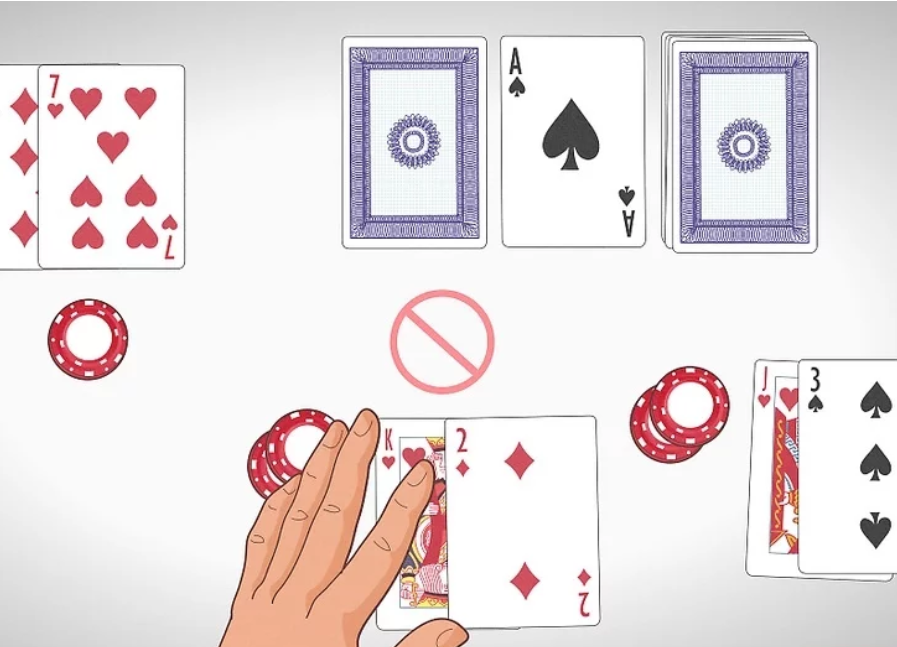
Leave your cards on the table and don’t touch them
You should never pick up your hand in blackjack since there’s no reason to keep it a secret from the dealer or other players. Rather, after the dealer places your cards down, don’t take them off the table.

Use hand signals to call your plays
For security purposes, casinos require players to physically demonstrate their gameplay decisions so there’s no confusion or debate later on. To review, the hand signals are as follows:
- Hit: Tap the table with your pointer and middle finger
- Stay: Wave a flat hand above the table
- Surrender: Draw a horizontal line with 1 finger
- Split: Spread your pointer and middle finger in a “V” shape and touch the table with them
- Double down: Touch the game table with an extended pointer finger

Give the dealer a tip once you’re done playing
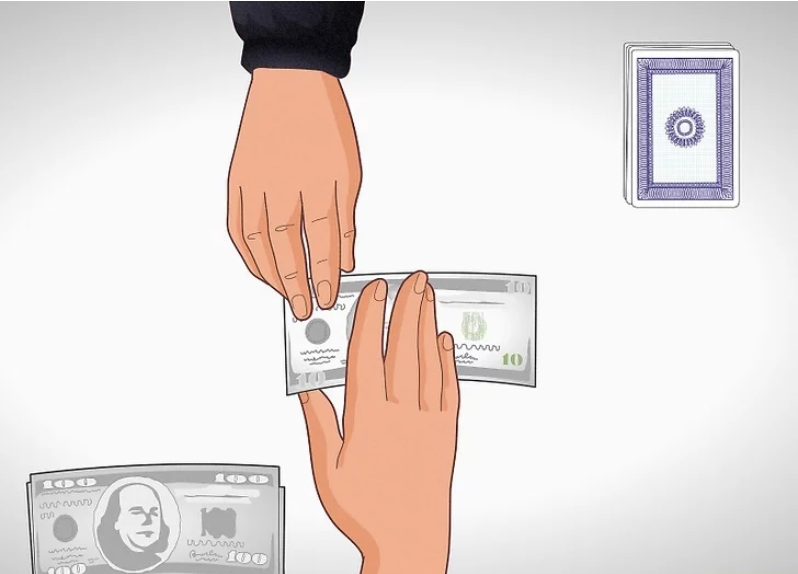
As a token of appreciation for managing the game, pay the dealer a little bonus based on how much you stand to win. Many players choose to gift the dealer between $5 and $10, but if you’ve won a significant amount of money, you’re welcome to donate more.
Important Do’s and Don’ts for First Time Players
DO’s
- Choose a game with a low minimum wager of $5 or $10, and don’t be afraid to admit to the dealer that you are a novice. Although they can’t play your hand for you, a skilled dealer will teach you the game and desire you to succeed.just offer recommendations.
- Throughout the game, you should periodically “toke” or tip your dealer. Dealers receive the majority of their pay on tips received from players, just like waiters and bartenders do. By putting a chip on the front line of your betting circle—which is printed on the table—you can either wager for the dealer. The dealer also profits if your hand wins since the “toke” is paid out in the same way as your wager. Alternatively, you can simply give the dealer a tip whenever you’d like. Tipping for excellent service is also polite in blackjack, not only when you’re winning.
- Above all, establish a boundary or objective for yourself and cease playing as soon as you’ve reached it. My own rule is that I will stop playing and cash out if my initial buy-in (dollar amount) doubles.
- The game of blackjack is highly sociable. When you join, say hello to everyone at the table and have fun.
- Remember, it’s just a game…have fun!
DON’Ts
- Never wager more than you can comfortably lose. Once your allotted amount has been spent, quit playing and take advantage of the casino’s other features, which include the restaurants, shops, and, if they’re open, the spa and salon.
- Even if this is your first time playing, don’t let other gamers teach you how to do it. Everyone is free to play their hand however they see fit. Refrain from letting intimidation from others.
- Once the hand has begun, do not touch your cards or your bets unless you are playing a game where the cards are thrown to the players. If you require assistance in any manner, the dealer will provide it.
- On a live gaming table, electronic gadgets (such as smartphones, tablets, etc.) are not allowed. Never, ever set down heavy objects like coats, sweaters, or phones on the gaming table—not even on the edge.
Playing games, particularly blackjack, can be thrilling and enjoyable. “I’ve witnessed strangers sit down at a table and, after a little while of playing, they all become friends,” adds Brian. “It’s a fantastic opportunity to socialize and meet new people.”
I will never forget the great advise that Brian gave me: “You will have a good time if you view gaming as a form of recreation and entertainment.”

Leave a Reply